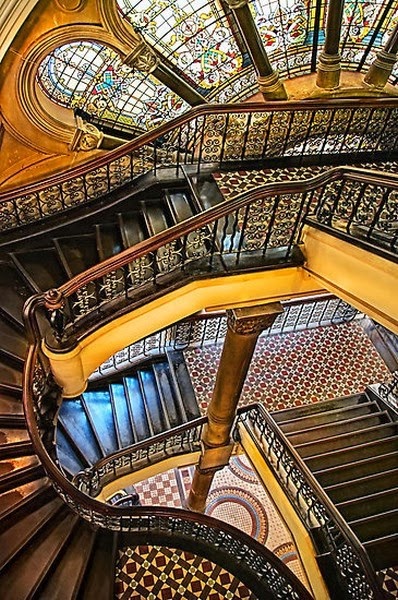1) - Queen Victoria Building, Sydney.


The Queen Victoria Building, now affectionately known as the QVB, was designed by George McRae and completed in 1898, replacing the original Sydney markets on the site. Built as a monument to the long reigning monarch, construction took place in dire times, as Sydney was in a severe recession. The elaborate Romanesque architecture was specially planned for the grand building so the Government could employ many out-of-work craftsmen - stonemasons, plasterers, and stained window artists - in a worthwhile project. Originally, a concert hall, coffee shops, offices, showrooms, warehouses and a wide variety of tradespeople, such as tailors, mercers, hairdressers and florists, were accommodated.
2)- Tape Floor- Jim Lambei.

Lambie specialises in colourful sculptural installations made from everyday modern materials including pop culture objects, such as posters and album covers, and household accessories. The other trademark theme in his artistic practice is using brightly coloured vinyl tape arranged into patterns around the floor of the gallery space, tracing the shape of the room to reveal the idiosyncrasies of its architecture. The vinyl tape, an everyday material applied in continuous lines, has a capacity to transform the dynamics of space, changing a quiet gallery space into an energetic and emotional space of sensory pleasure. Lambie creates a rhythm that vibrates and pulsates, and even confuses and disorients the spectator. According to Lambie: “For me something like Zobop, the floor piece, it is creating so many edges that they all dissolve. Is the room expanding or contracting? … Covering an object somehow evaporates the hard edge off the thing, and pulls you towards more of a dreamscape.”
In addition to his mesmerizing floor installations, Lambie creates found object sculptures.
3) - Staircase at Lello Bookshop (Portugal)
.jpg)
The Lello bookstore in Porto, Portugal, is open since 1906 and is surely one of the most beautiful bookstores of the world.
4)- The Granite Staircase at Fort Camden, Cork Harbour. Ireland

Camden Fort Meagher is internationally recognised as being "One of the finest remaining examples of a classical Coastal Artillery Fort in the world".
For almost 400 years the fort played a key role as a strong strategic position for the defence of Ireland, the west coast of England and Wales.
65% of Camden Fort Meagher is located underground in a labyrinth of tunnels and chambers.
Camden Fort Meagher is a prime location to watch ships passing through Cork Harbour, the second largest natural harbour in the world.
